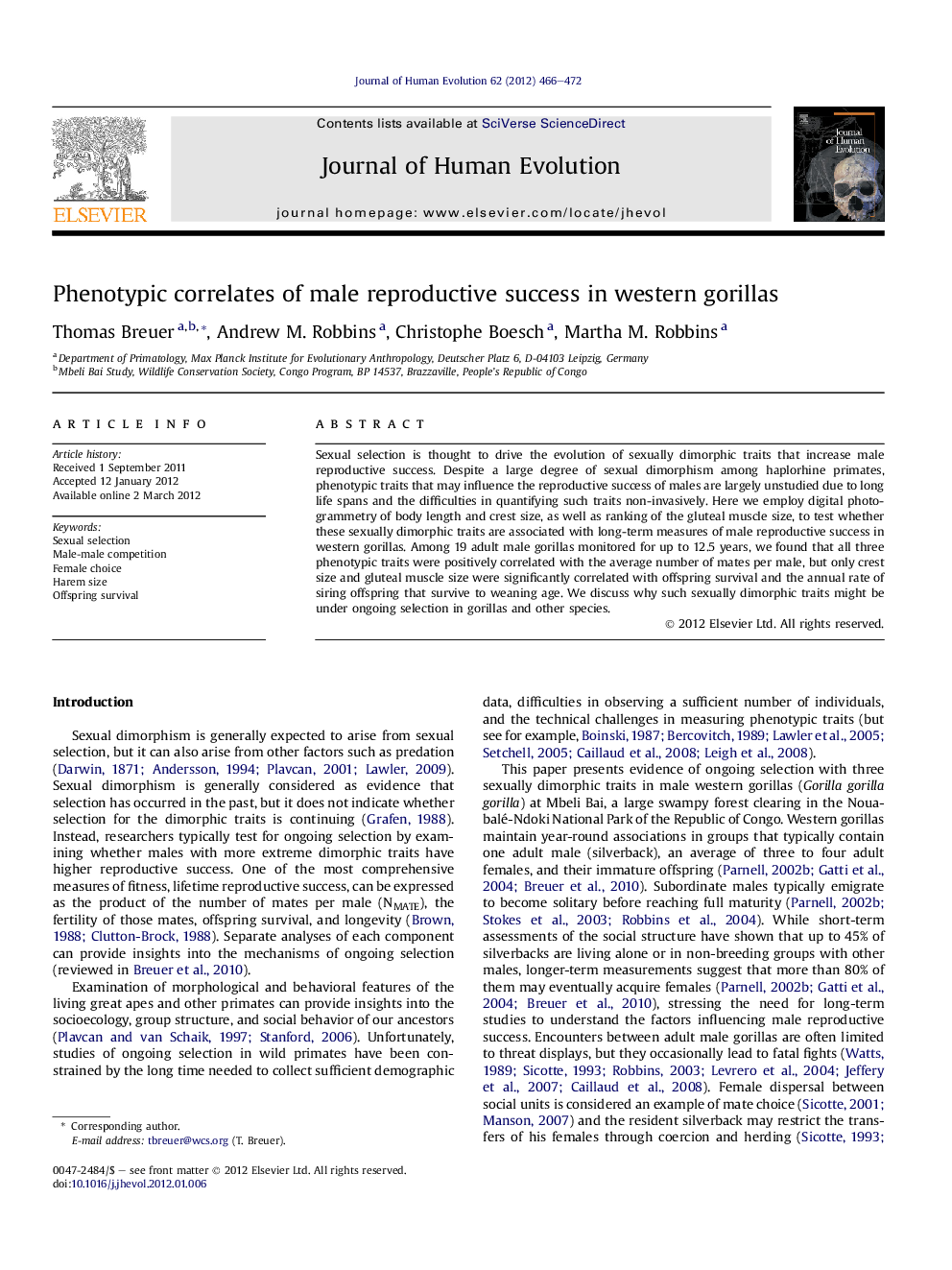| Article ID | Journal | Published Year | Pages | File Type |
|---|---|---|---|---|
| 4556408 | Journal of Human Evolution | 2012 | 7 Pages |
Sexual selection is thought to drive the evolution of sexually dimorphic traits that increase male reproductive success. Despite a large degree of sexual dimorphism among haplorhine primates, phenotypic traits that may influence the reproductive success of males are largely unstudied due to long life spans and the difficulties in quantifying such traits non-invasively. Here we employ digital photogrammetry of body length and crest size, as well as ranking of the gluteal muscle size, to test whether these sexually dimorphic traits are associated with long-term measures of male reproductive success in western gorillas. Among 19 adult male gorillas monitored for up to 12.5 years, we found that all three phenotypic traits were positively correlated with the average number of mates per male, but only crest size and gluteal muscle size were significantly correlated with offspring survival and the annual rate of siring offspring that survive to weaning age. We discuss why such sexually dimorphic traits might be under ongoing selection in gorillas and other species.
